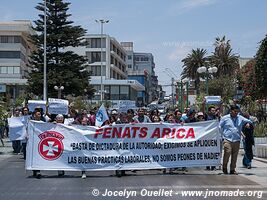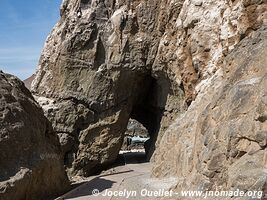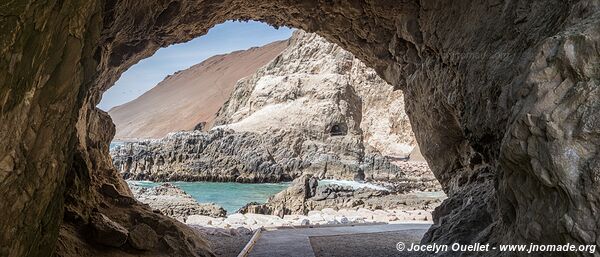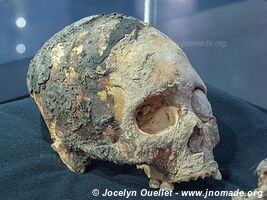Arica and around
Arica
After an easy crossing at the border, my first stop is Arica. Even with a population of 233,000 inhabitants, the city is pleasant and calm. It is a very sunny place; the average monthly temperature varies from 18 to 26 degrees Celsius, and there are only two days of rain every year. Yes, really, 2 days a year.
Two things surprise me as soon as I arrive in the city after spending many weeks in Peru. First, the place is clean, and second, motorists are courteous. Contrary to the countries to the north where pedestrians are far from getting priority, here drivers allow us to cross at pedestrian crossings. There are very attentive, and one only has to put a foot in the street to have the cars stop. It is so relaxing.
Before getting to Chile, I knew the country was going through some rough times, and there were a lot of protests, sometimes with violence, against the government and especially against its president. At this time in my journey, I don't know much about the reasons for all these protests.
As soon as I arrive at a hotel where I can camp, I notice there are many signs with demands. The people on the site explain that they used them during protests in the streets of Arica. As a matter of fact, when strolling downtown, I quickly notice that some days were rough during some of the rallies.
During another walk, these healthcare workers are protesting in the streets to obtain better conditions.
The demonstrators seem to target specific types of business like the banks and telecom companies. The store windows of most banks seem to have been damaged.
Anzota Caves
The Anzota Caves, on the shore of the ocean, are located a few kilometres from the city of Arica.
Lluta Geoglyphs
San Miguel de Azapa
In a semi-desertic valley, one can find the interesting museum of San Miguel de Azapa in a village with the same name.
The museum is well known for protecting the oldest mummies in the world. The Chinchorro culture that created them, refers to a group of fishermen that lived on the coast of the Atacama Desert between 7000 and 1500 BC. That is to say, people as old as the ancient Egyptians.
Many types of mummification have been documented by the archeologists. The oldest mummies date from 5000 BC.




































































